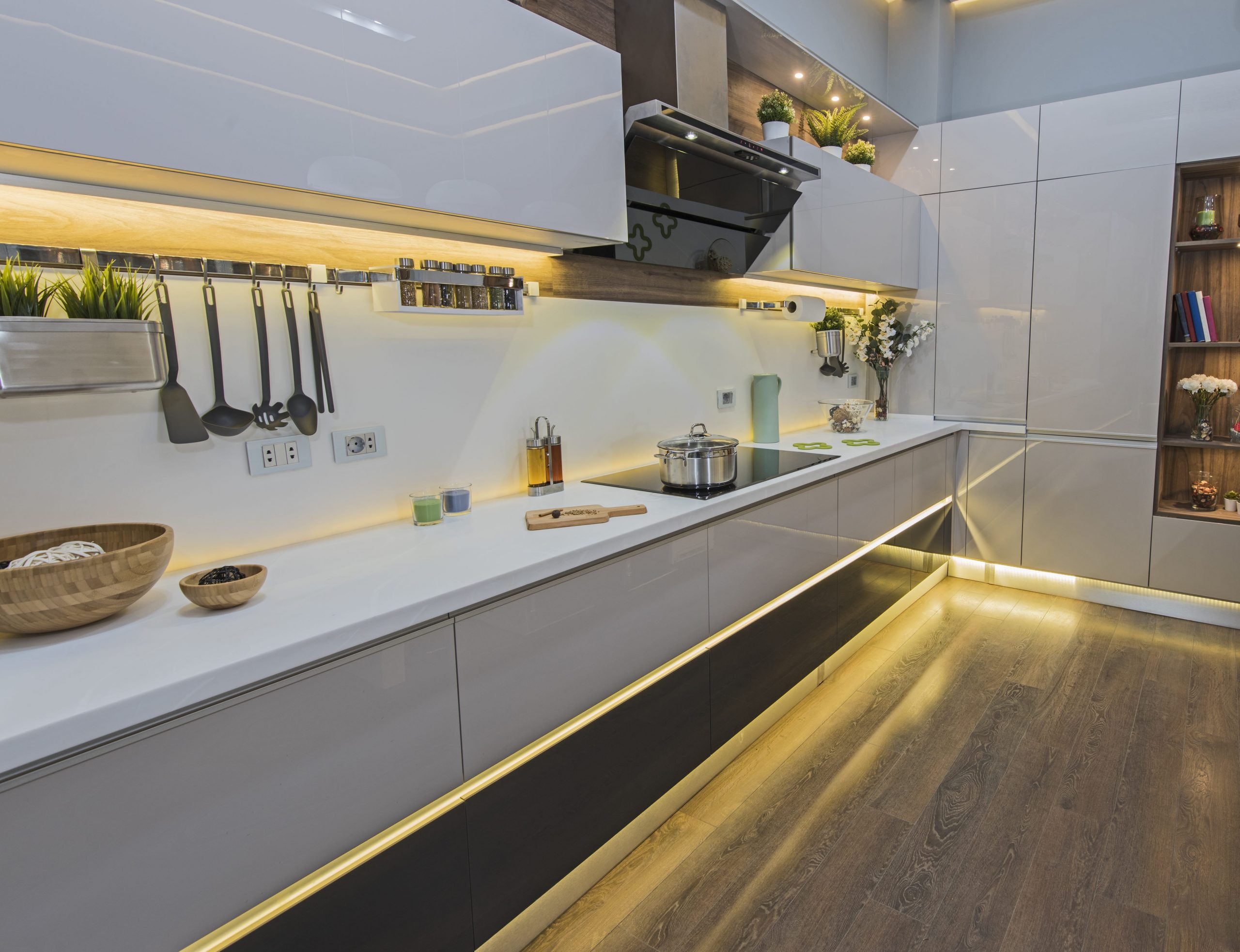Kitchen Planning
Do I Need Kitchen Plinth Lights?
21.03.2020


If you’re considering incorporating plinth lights into your kitchen design, here are some factors to bear in mind.
Lights built into the base of cabinets add depth to a kitchen space. Altering our perception, plinth lights direct our attention to different elements of a kitchen.
With different colours, styles, and installation options, plinth lights offer a simple way to create a gentle, modern ambience to a kitchen. Given their versatility, they can evoke an array of auras in the space.
Tips: A soft white light underneath cabinets can help to create a sense of calm on busy mornings, and can ease you into a relaxing evening after a long day at work. Alternatively, a deep red or purple light can contribute to a mellow evening vibe – perfect for entertaining and is particularly effective with darker flooring. Many plinth lights are able to change colour and intensity, giving you the ability to change mood whenever you want.
A considered use can alter the mood of the kitchen, from nurturing a space of serenity to creating a social energy.
They also come in handy as night lights for yourself, any family members due home late or even your pets. The muted tones of plinth lighting won’t awaken you as a main light would, but will still provide you with enough glow to guide you to the fridge door.
Most plinth lights rely on LED technology. LEDs are low-energy, hard-wearing, and very safe. They also emit significantly less heat than traditional light bulbs, meaning that they pose little risk to the wandering hands of toddlers or the curious noses of your household pets.
Made in a variety of shapes and sizes, your lights can be modified to compliment the style of your kitchen. Perhaps the most common shape is the circular spotlight. Embedded into plinths, these lights add a subtle sense of modernity without overpowering other design features of the kitchen. Alternatively, rectangular plinth lights may be in line with the kitchen’s style – especially if you wish to create maintain a uniform, more utilitarian aspect.
Regardless of their shape, fit plinth lights at the center of a unit’s base, at a fixed height. The regularity this creates is calming and avoids over-cluttering beneath kitchen cabinets. If units are unequally spaced or shaped, maintain a particular distance between lights – we would advise a spacing of between 40-50cm.
If regular spacing isn’t feasible, strip lighting might be a viable alternative. In contrast to spot or rectangular lights, LED strips give an unbroken glow of light, and the impression of increased space underneath kitchen units. They’re sometimes preferable to shaped lights in kitchens that have reflective floors, as they don’t cause as harsh a glare.
They can be installed either into plinths, facing outwards, or into the overhang between plinths and units, facing downwards. Outward-facing lights are more suitable for spot or rectangular lights, and reach out further into the kitchen floor. Downward-facing lights are more appropriate for LED strips, which can be fitted beneath units and above plinths. The strip lights have a shorter range, and might be considered a more discreet alternative.
Lighting is a key element in kitchen design. Alongside ceiling lights, hanging lights, and tabletop lamps, kitchen plinth lights are worthy of your attention – especially for modern styles or to add a contemporary feel to classic designs.
Burnhill Kitchens design and customise all aspects of your kitchen according to your precise needs. Our award-winning designers strive to understand what’s important to you, and how to incorporate this into a bespoke kitchen that will serve you for years to come. For inspiration on our work, please request one of our free brochures.